Triplet Therapy, Transplantation, and Maintenance until Progression in Myeloma.
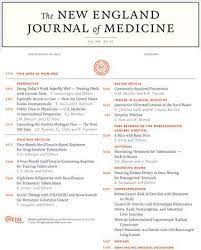 Richardson PG, Jacobus SJ, Weller EA, Hassoun H, Lonial S, Raje NS, Medvedova E, McCarthy PL, Libby EN, Voorhees PM, Orlowski RZ, Anderson LD Jr, Zonder JA, Milner CP, Gasparetto C, Agha ME, Khan AM, Hurd DD, Gowin K, Kamble RT, Jagannath S, Nathwani N, Alsina M, Cornell RF, Hashmi H, Campagnaro EL, Andreescu AC, Gentile T, Liedtke M, Godby KN, Cohen AD, Openshaw TH, Pasquini MC, Giralt SA, Kaufman JL, Yee AJ, Scott E, Torka P, Foley A, Fulciniti M, Hebert K, Samur MK, Masone K, Maglio ME, Zeytoonjian AA, Nadeem O, Schlossman RL, Laubach JP, Paba-Prada C, Ghobrial IM, Perrot A, Moreau P, Avet-Loiseau H, Attal M, Anderson KC, Munshi NC; DETERMINATION Investigators.
Richardson PG, Jacobus SJ, Weller EA, Hassoun H, Lonial S, Raje NS, Medvedova E, McCarthy PL, Libby EN, Voorhees PM, Orlowski RZ, Anderson LD Jr, Zonder JA, Milner CP, Gasparetto C, Agha ME, Khan AM, Hurd DD, Gowin K, Kamble RT, Jagannath S, Nathwani N, Alsina M, Cornell RF, Hashmi H, Campagnaro EL, Andreescu AC, Gentile T, Liedtke M, Godby KN, Cohen AD, Openshaw TH, Pasquini MC, Giralt SA, Kaufman JL, Yee AJ, Scott E, Torka P, Foley A, Fulciniti M, Hebert K, Samur MK, Masone K, Maglio ME, Zeytoonjian AA, Nadeem O, Schlossman RL, Laubach JP, Paba-Prada C, Ghobrial IM, Perrot A, Moreau P, Avet-Loiseau H, Attal M, Anderson KC, Munshi NC; DETERMINATION Investigators.
New England Journal of Medicine. 2022
PMID: 35660812 (NEJM Link)
CONCLUSIONS. Among adults with multiple myeloma, triplet therapy (lenalidomide, bortezomib, and dexamethasone) plus autologous stem-cell transplantation was associated with longer progression-free survival than triplet therapy alone. No overall survival benefit was observed.
Prognostic value of minimal residual disease negativity in myeloma: combined analysis of POLLUX, CASTOR, ALCYONE, and MAIA.
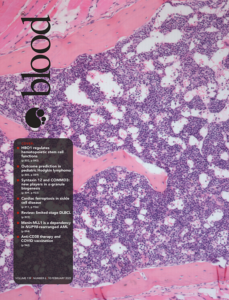 Cavo M, San-Miguel J, Usmani SZ, Weisel K, Dimopoulos MA, Avet-Loiseau H, Paiva B, Bahlis NJ, Plesner T, Hungria V, Moreau P, Mateos MV, Perrot A, Iida S, Facon T, Kumar S, van de Donk NWCJ, Sonneveld P, Spencer A, Krevvata M, Heuck C, Wang J, Ukropec J, Kobos R, Sun S, Qi M, Munshi N.
Cavo M, San-Miguel J, Usmani SZ, Weisel K, Dimopoulos MA, Avet-Loiseau H, Paiva B, Bahlis NJ, Plesner T, Hungria V, Moreau P, Mateos MV, Perrot A, Iida S, Facon T, Kumar S, van de Donk NWCJ, Sonneveld P, Spencer A, Krevvata M, Heuck C, Wang J, Ukropec J, Kobos R, Sun S, Qi M, Munshi N.
Blood. 2022
PMID: 34289038 (Blood Link)
CONCLUSIONS: Patients who are MRD negative with ≥CR have improved PFS, regardless of therapy, vs those who do not reach CR or are MRD positive. Daratumumab-based therapies lead to higher rates of ≥CR with MRD negativity compared with the standard of care.
Idecabtagene Vicleucel in Relapsed and Refractory Multiple Myeloma.
 Munshi NC, Anderson LD Jr, Shah N, Madduri D, Berdeja J, Lonial S, Raje N, Lin Y, Siegel D, Oriol A, Moreau P, Yakoub-Agha I, Delforge M, Cavo M, Einsele H, Goldschmidt H, Weisel K, Rambaldi A, Reece D, Petrocca F, Massaro M, Connarn JN, Kaiser S, Patel P, Huang L, Campbell TB, Hege K, San-Miguel
Munshi NC, Anderson LD Jr, Shah N, Madduri D, Berdeja J, Lonial S, Raje N, Lin Y, Siegel D, Oriol A, Moreau P, Yakoub-Agha I, Delforge M, Cavo M, Einsele H, Goldschmidt H, Weisel K, Rambaldi A, Reece D, Petrocca F, Massaro M, Connarn JN, Kaiser S, Patel P, Huang L, Campbell TB, Hege K, San-Miguel
New England Journal of Medicine. 2021
PMID: 33626253 (NEJM Link)
CONCLUSIONS. Ide-cel induced responses in a majority of heavily pretreated patients with refractory and relapsed myeloma; MRD-negative status was achieved in 26% of treated patients. Almost all patients had grade 3 or 4 toxic effects, most commonly hematologic toxic effects and cytokine release syndrome.
Biallelic loss of BCMA as a resistance mechanism to CAR T cell therapy in a patient with multiple myeloma.
 Samur MK, Fulciniti M, Aktas Samur A, Bazarbachi AH, Tai YT, Prabhala R, Alonso A, Sperling AS, Campbell T, Petrocca F, Hege K, Kaiser S, Loiseau HA, Anderson KC, Munshi NC.
Samur MK, Fulciniti M, Aktas Samur A, Bazarbachi AH, Tai YT, Prabhala R, Alonso A, Sperling AS, Campbell T, Petrocca F, Hege K, Kaiser S, Loiseau HA, Anderson KC, Munshi NC.
Nature Communications. 2021
PMID: 33558511 (Nat Commun Link)
CONCLUSIONS: We report selection, following initial CAR T cell infusion, of a clone with biallelic loss of BCMA acquired by deletion of one allele and a mutation that creates an early stop codon on the second allele. This loss leads to lack of CAR T cell proliferation following the second infusion and is reflected by lack of soluble BCMA in patient serum.
Genome-Wide Somatic Alterations in Multiple Myeloma Reveal a Superior Outcome Group.
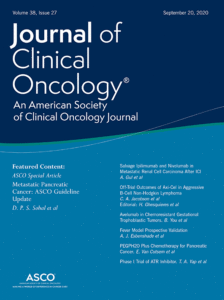
Samur MK, Aktas Samur A, Fulciniti M, Szalat R, Han T, Shammas M, Richardson P, Magrangeas F, Minvielle S, Corre J, Moreau P, Thakurta A, Anderson KC, Parmigiani G, Avet-Loiseau H, Munshi NC.
Journal of Clinical Oncology. 2020
PMID: 32687451 (JCO Link)
CONCLUSIONS: This is a comprehensive study identifying genomic markers of a good-risk group with prolonged survival. Identification of this patient subgroup will affect future therapeutic algorithms and research planning.
Non-overlapping Control of Transcriptome by Promoter- and Super-Enhancer-Associated Dependencies in Multiple Myeloma.
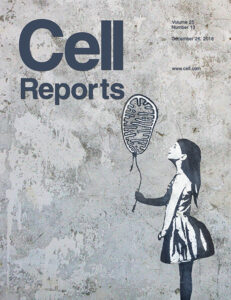 Fulciniti M, Lin CY, Samur MK, Lopez MA, Singh I, Lawlor MA, Szalat RE, Ott CJ, Avet-Loiseau H, Anderson KC, Young RA, Bradner JE, Munshi NC.
Fulciniti M, Lin CY, Samur MK, Lopez MA, Singh I, Lawlor MA, Szalat RE, Ott CJ, Avet-Loiseau H, Anderson KC, Young RA, Bradner JE, Munshi NC.
Cell Reports. 2018
PMID: 30590042 (Cell Reports Link)
CONCLUSIONS: E2F1 and its heterodimerization partner DP1 are required for myeloma cell proliferation. E2F1-DP1 heterodimers regulate promoter proximal transcription. E2F1 and BRD4 establish distinct regulatory axes in multiple myeloma. Combined inhibition of BRD4 and E2F co-operatively reduces myeloma tumor growth.
Long intergenic non-coding RNAs have an independent impact on survival in multiple myeloma.
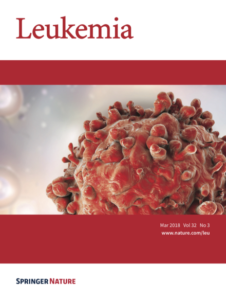 Samur MK, Minvielle S, Gulla A, Fulciniti M, Cleynen A, Aktas Samur A, Szalat R, Shammas M, Magrangeas F, Tai YT, Auclair D, Keats J, Richardson P, Attal M, Moreau P, Anderson KC, Parmigiani G, Avet-Loiseau H, Munshi NC.
Samur MK, Minvielle S, Gulla A, Fulciniti M, Cleynen A, Aktas Samur A, Szalat R, Shammas M, Magrangeas F, Tai YT, Auclair D, Keats J, Richardson P, Attal M, Moreau P, Anderson KC, Parmigiani G, Avet-Loiseau H, Munshi NC.
Leukemia. 2018
PMID: 29749396 (Leukemia Link)
CONCLUSIONS: lincRNA signature was able to identify patients with significant differential outcomes within each low and high-risk categories identified using standard risk categorization including cytogenetic/FISH, ISS, and MRD negative or positive. Our results suggest that lincRNAs have an independent effect on MM outcome and provide a rationale to evaluate its molecular and biological impact.
Heteroclitic XBP1 peptides evoke tumor-specific memory cytotoxic T lymphocytes against breast cancer, colon cancer, and pancreatic cancer cells.
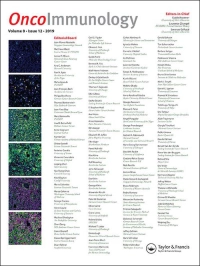 Bae J, Samur M, Munshi A, Hideshima T, Keskin D, Kimmelman A, Lee AH, Dranoff G, Anderson KC, Munshi NC.
Bae J, Samur M, Munshi A, Hideshima T, Keskin D, Kimmelman A, Lee AH, Dranoff G, Anderson KC, Munshi NC.
Oncoimmunology. 2014
PMID: 25941601 (Oncoimmunology Link)
CONCLUSIONS: Our results demonstrate the immunotherapeutic potential of a cocktail of immunogenic HLA-A2 specific heteroclitic XBP1 US184–192 and heteroclictic XBP1 SP367–375 peptides to induce CD3+CD8+ CTL enriched for CM and EM cells with specific antitumor activities against a variety of solid tumors.
A full list of all publications can be found on Pubmed (link).